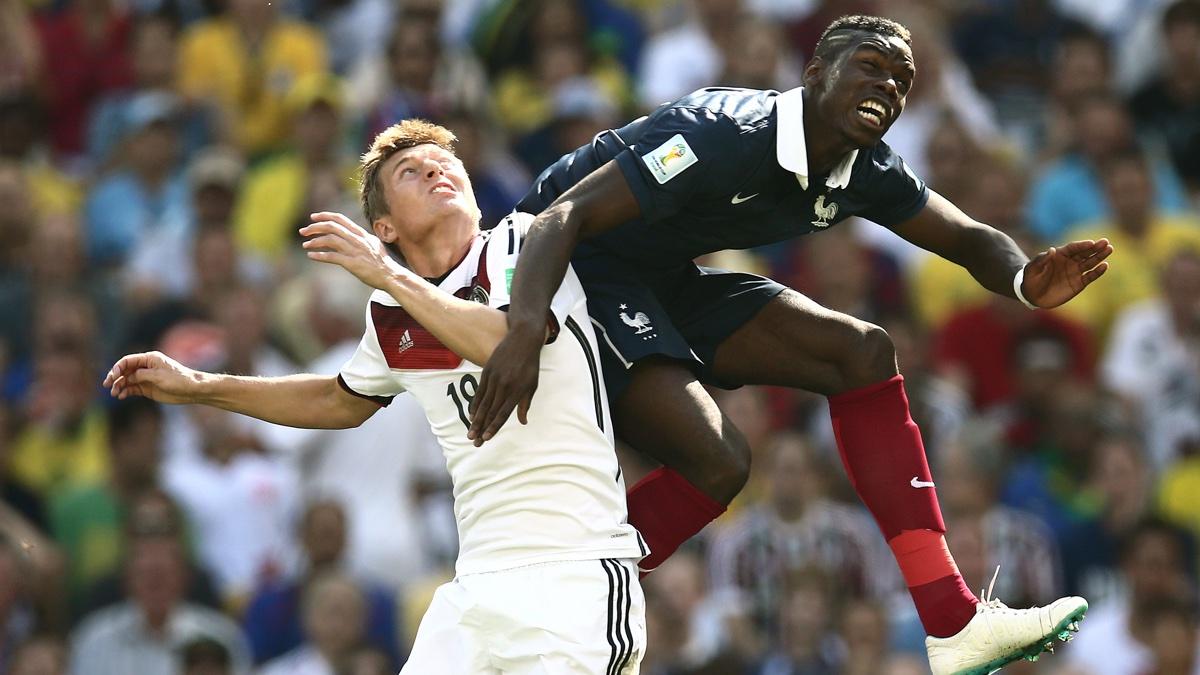France - Germany: Home Sweet Home
Julien Roger mercredi 6 juillet 2016

There are a lot of beliefs in football about what does or does not influence the outcome of a game outside of the teams relative strength: fatigue, morale, media pressure, the weather, the refs… some of these effects are harder to quantify than others but here is one thing which we know for sure: playing at home really helps.
We won’t try to explain the reasons why it is so but we’ll give you some evidence that the home field advantage is real in most contexts and look at what it should mean for France in its semi-final against Germany.
A Stable but Uneven Effect
We’ve compiled most official games we could find since 1945 and looked at some categories, from the broadest to the closest to our interest: all official games where one team was playing at home, all major competitions (essentially World Cups, confederation championships and Confederation Cups), major competitions held in Europe, and finally the Euros themselves. We’ve computed the winning percentage from the point of view of the host, counting draws and games ending in penalty kicks as half wins.
| Competitions | Since 1945 | Since 1990 | ||
|---|---|---|---|---|
| Nb of Games | Win % | Nb of Games | Win % | |
| All Official Games | > 24,000 | 62.5 % | > 16,000 | 62.6 % |
| All Major Competitions | 689 | 68.7 % | 332 | 69.4 % |
| Euros + WC in Europe | 118 | 68.6 % | 67 | 68.7 % |
| Euros | 69 | 61.6 % | 46 | 59.8 % |
The goal of these narrowing categories was to look for several possible effects such as geography, type of competition and evolution through time.
Let’s start with the two simple conclusions: first the home field advantage is real, the team playing at home wins between 59 and 69 percent of the time depending on the context. Second, its effects are stable over time. There seems to be little variation in the winning percentage of the home team within each category.
Now for the more subtle aspects: competitions and geography. There’s a clear increase in the advantage when restricting to major events, with a jump in the odds of about 6%. This category combines competitions with greatly different formats though with the Copa America and its uneven frequency, the Gold Cup and the US as its perennial host or the Asian Cup and its 47 eligible nations spanning two continents.
As such we can try to narrow it down further and limit ourselves to competitions played in Europe. If we combine Euros and World Cups held on the continent we find more than a hundred games played by the host nation and an effect which is in line with the one observed for all competitions. At this point, geography doesn’t seem to be playing a role.
Yet if we look even closer and zero in on the Euros themselves, this added effect for major events disappears entirely. The narrowest category, Euro games played since 1990, shows the smallest effect. It also consists of only 46 games, which borders on small sample size and makes any definitive conclusion risky.
Still, the drop in the home field advantage between all major competitions and the Euro itself is significant (from a statistical point of view). There could be many reasons for this and we have some ideas about it ourselves but we’ll leave this as food for thoughts for now.
What About France - Germany?
As of now, France is the clear favorite in our StatiumElo model, with about a 68% chance of coming out on top. This might seem optimistic, as such let’s break it down so that you can make up your own mind.
If Germany and France were of equal strength, the home field advantage alone would give France a 62% chance of winning the game. We apply the same factor to all games where a team plays at home regardless of the competition. Our analysis above seems to show that the effect of playing at home may vary depending on the context, but for the Euro itself this is the most conservative option.
On top of this, our models considers that, based on their track record, France has a small edge over Germany right now. If they were playing on neutral ground, we would give France a 55% chance of coming out on top.
Compounding these effects turns France into our clear favorite for this game. Yet, a 68-32 split is still clearly in the grey area. What would you be willing to bet if you knew you could be wrong about 1 in 3 times?